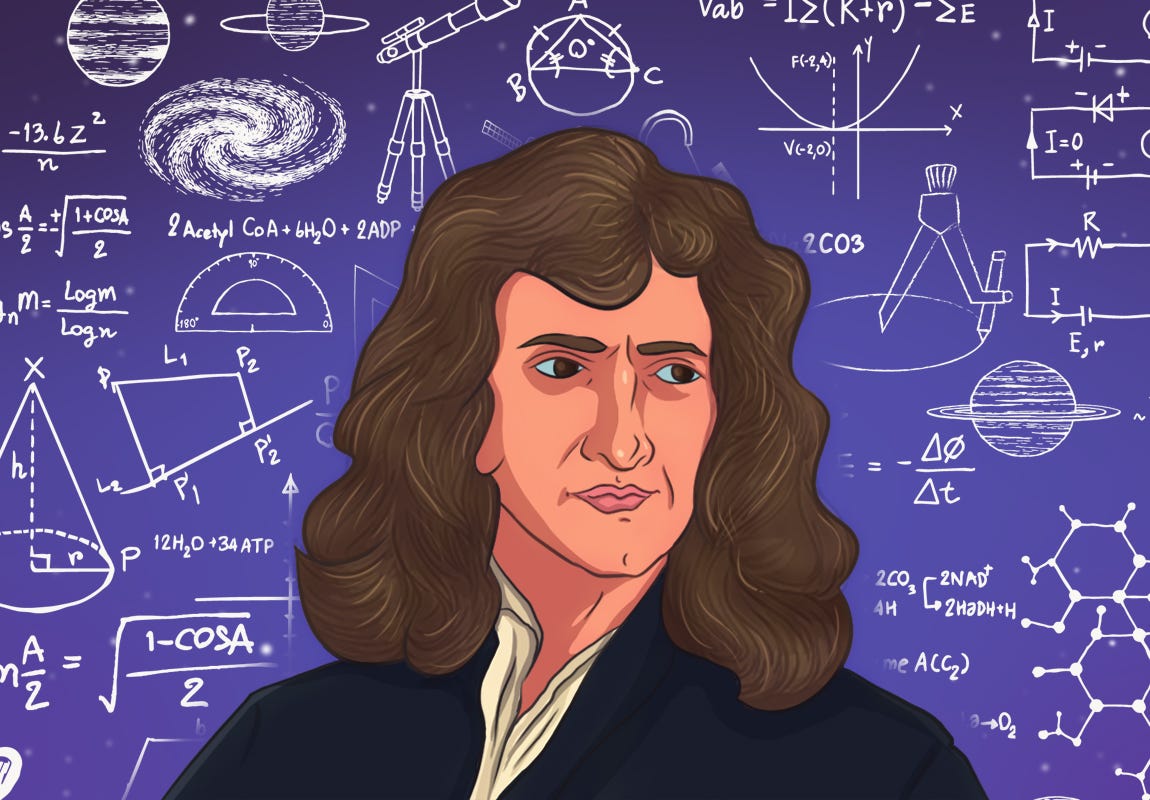Laws of motion
Before we understand the laws of motion, we need to know about the different types of motion. Uniform motion is an example. The motion of objects in the stationary state, their motion at a certain speed in a straight line, and the circular motion of the planets were considered to be uniform motion.
Newton challenged the existing arguments about momentum and acceleration with a single question. This question arose in the midst of preconceived notions that momentum increased in direct proportion to time.
What was really causing this movement of objects? This was the question. Newton redefined different kinds of motion. He also considered the motion of objects in a stationary state and the motion of objects at a certain speed in a straight line as uniform motion.
However, he considered circular motions specially and defined acceleration more clearly. That is to say, any movement that changes the speed or direction of an object must be acceleration. This distinction between acceleration and uniform motion was one of the biggest contributions made by Newton. It paved the way for the formulation of the three laws of motion.
Force is a very subtle scientific concept. Newton's first law implies that when an object moves, a force is applied there. However, the law did not specify what kind of force it would be.
First Law of Motion
An object at rest will be at rest, and an object in motion with the same speed in the same direction will continue to be in motion unless it is acted upon by an unbalanced force. This provides a practical definition of the force responsible for motion and the answer to the question Newton himself had asked.
Force is a very subtle scientific concept. Newton's first law implies that when an object moves, a force is applied there. However, the law did not specify what kind of force it would be.
Second Law of Motion
The acceleration produced in an object by a force is directly proportional to the magnitude of the force and inversely proportional to the mass of the object. This is a law of measurement. It defines the exact mathematical relationship between three physical quantities, namely force, mass, and acceleration.
Force = Mass x Acceleration or F= m x a
It is very crucial at this stage to introduce the measurement unit of force. Force is measured in Newtons. More specifically, a Newton of force is that which can move a kilogram of mass one metre in one second. With this equation, it is possible to calculate the force required in various scenarios.
What is mass?
This is a subtle idea, but not strange. Though it can be said that whatever is contained in an object, to an extent, is a clear measure of mass, Newton gave another definition of mass. According to him, mass represents a tendency to resist the acceleration of an object. We often call it inertia.
Newton’s laws of motion provide a complete framework for investigating and understanding all the forces that are occurring in our lives.
Third Law of Motion
This is perhaps the most familiar but precise one. Every action has an equal and opposite reaction.
That is to say, force always acts on an object in exact balanced pairs at the same time. Countless examples can be given, like when a ball is thrown, a bullet is fired, a rocket is launched, and so on. Equal and opposite forces in the third law of motion leads to a new concept of momentum.
Momentum = Mass X Velocity
The rate of change of momentum in time is equal to the force acting on the object. This can be said in another way. The product of velocity and mass before an action will be the same after it has taken place. Conservation of momentum and conservation of angular momentum are the ideas that followed. Examples of angular momentum range from the rotation of a spinning top to the motion of the Earth.
Newton’s laws of motion provide a complete framework for investigating and understanding all the forces that are occurring in our lives. Newton himself used this framework to describe the ever-present force, that is, gravitational pull.
Now put on your thinking hats and think about the following questions for a couple of minutes.
As a teacher, how would you describe the term "Laws of motion" to your students?
Can you think of the ways in which Newton’s laws of motion influenced the study of forces in nature?
How do you describe the contributions of Isaac Newton in the study of different types of motions?
Write down your thoughts and discuss them with your students, children and your colleagues. Listen to their views and compare them with your own. As you listen to others, note how similar or different your views are to others’.
Thank you for listening. Subscribe to The Scando Review on thescandoreview.com.
Happy Teaching!














Newton and his Contribution to Science